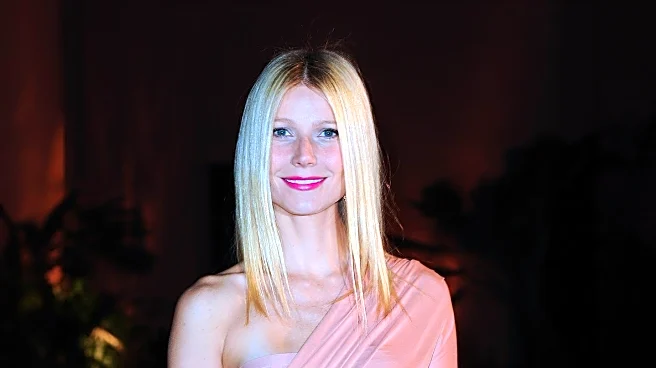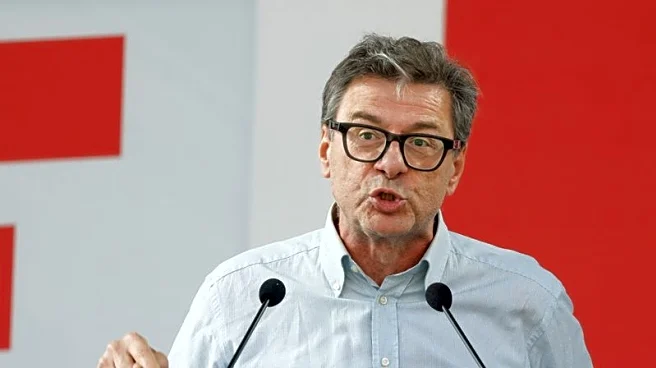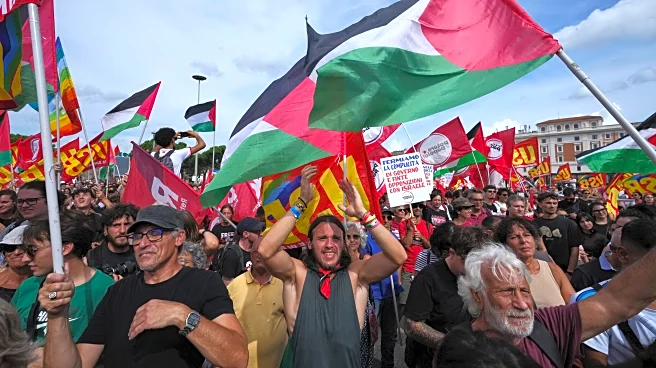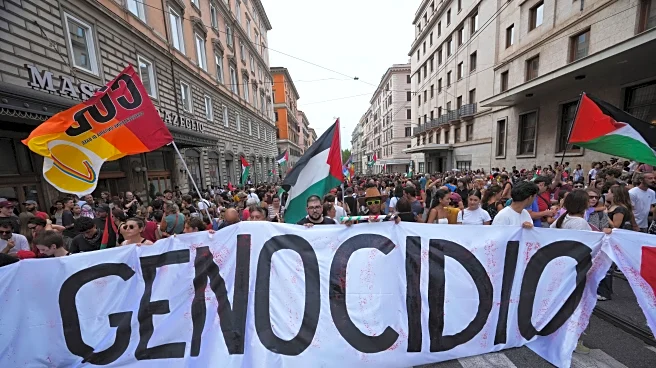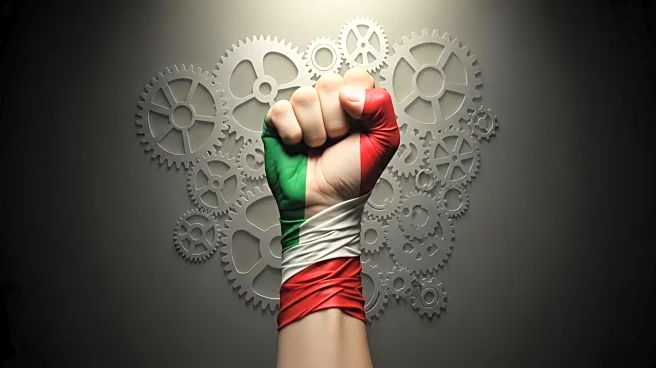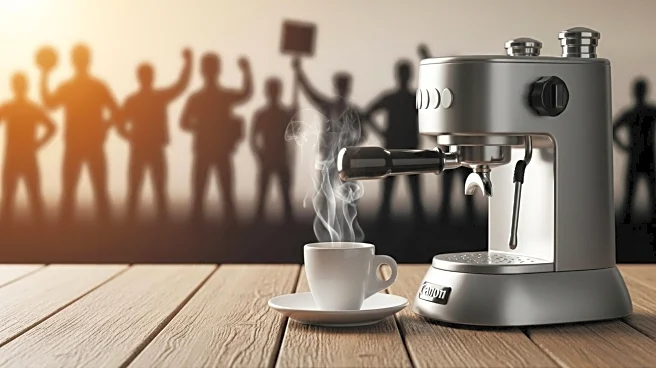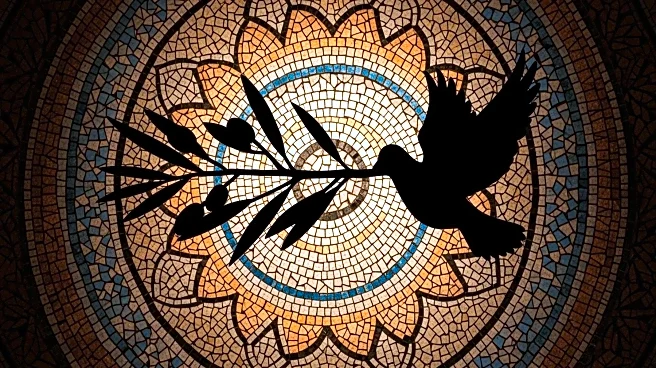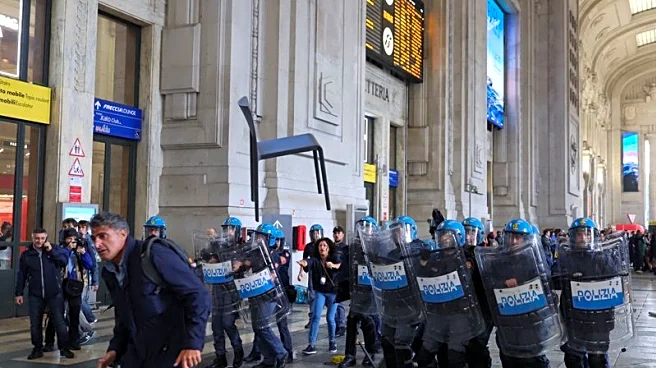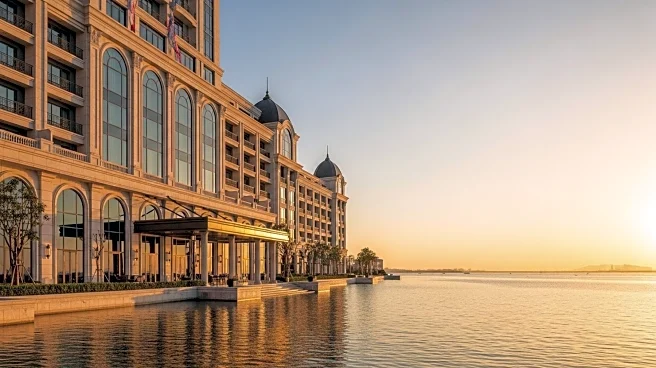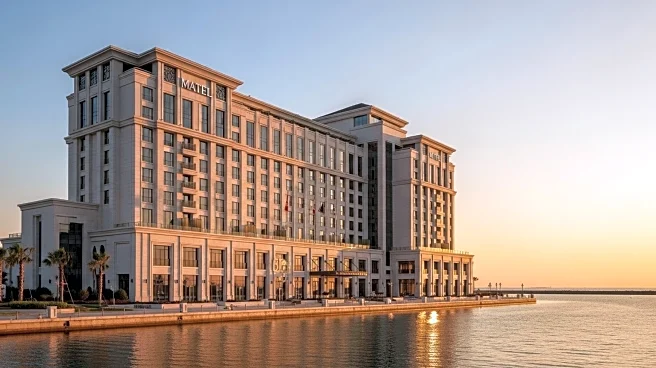What's Happening?
Thaddaeus Ropac, a prominent European art dealer, has opened his seventh gallery in Milan, reigniting discussions about the city's potential as a contemporary art capital. Milan, known for its design and fashion industries, has struggled to establish itself as a major player in the contemporary art world despite hosting significant institutions and events. Ropac's new gallery, located in a historic palazzo, features works by artists like Georg Baselitz and Lucio Fontana. The gallery's opening has been marked by a series of high-profile events, attracting international attention and sparking debate among local gallerists about Milan's future in the art market.
Why It's Important?
Ropac's expansion into Milan could signal a shift in the city's art scene, potentially attracting more international collectors and increasing its visibility in the global art market. Milan's strategic location and recent tax incentives for foreign nationals make it an attractive destination for wealthy expatriates, which could boost the local art economy. However, skepticism remains about whether Milan can truly become a contemporary art hub, given its historical focus on design and fashion. The presence of established secondary market players and seasoned collectors may offer opportunities for growth, but challenges persist in developing a robust contemporary art market.
What's Next?
Ropac's gallery aims to build connections with local collectors, curators, and artists, potentially fostering a more vibrant contemporary art scene in Milan. The city's upcoming events, such as the 2026 Winter Olympics, may further enhance its international profile. However, the lack of a public contemporary art museum remains a significant hurdle, and political support for cultural initiatives under Prime Minister Giorgia Meloni is uncertain. The gallery's success will depend on its ability to navigate these challenges and capitalize on Milan's existing cultural assets.
Beyond the Headlines
Milan's art scene faces the risk of being overshadowed by its booming property market, which could displace artists and students vital to its cultural vitality. The city's historical and cultural institutions play a crucial role in shaping its artistic identity, but funding cuts have stalled contemporary projects. Ropac's gallery may contribute to a cultural renaissance, but long-term success will require addressing systemic issues and fostering a supportive environment for contemporary art.

